Many of our adult and teen patients choose Invisalign for orthodontic treatment. Using this revolutionary system, you can straighten your smile without anyone even knowing. Invisalign uses a series of clear, custom aligners to gradually shift your teeth over time.
As a certified provider of Invisalign and Invisalign Teen, you can be confident in Dr. Parker’s ability to straighten your smile using this treatment option. During your consultation, we will discuss your case in detail to determine if you are a good candidate for Invisalign. You will also be able to ask questions about Invisalign, costs, insurance, and any other concerns you may have.
Next, we will take digital X-Rays and impressions of your teeth, which we will use to create a digital 3D image. From these images, we’ll be able to map out a precise treatment plan to achieve our goals. Using this technology, Dr. Parker will be able to show you a virtual representation of how your teeth will move in each stage of treatment. While every case is different, the treatment time for most adults is about a year. For teens, the length of treatment is similar to braces.
Based on the customized Baton Rouge, LA Invisalign treatment plan Dr. Parker creates for you, a series of custom-made, clear aligners will be created. These aligners are made of smooth, comfortable, BPA-free plastic that is comfortable to wear. Simply wear them throughout the day and remove them to eat or brush and floss your teeth. As you wear each set of aligners, your teeth will gently and gradually shift into place.
Approximately every two weeks, you will begin wearing a new set of aligners, advancing you to the next stage of treatment. To monitor your progress, you will have occasional check-ups with Dr. Parker, usually every six weeks. For best results and a speedy outcome, you should wear your aligners 20 to 22 hours per day, throughout your treatment. At each stage, you’ll be able to see how much closer you are to achieving a beautiful smile.
Are you unhappy with your smile? Do you have crooked or misaligned teeth that make you self-conscious? If so, you may be wondering if Invisalign is a suitable option for you. Look no further; Parker Orthodontics has the answer you need.
Orthodontic treatments have come a long way, and Invisalign has gained popularity as a convenient and discreet alternative to traditional braces. However, not everyone is a candidate for this innovative treatment. It’s essential to consult with an experienced orthodontist to determine if Invisalign is right for you.
So, if you’ve been considering Invisalign as a solution to straighten your teeth, it’s crucial to understand the factors that make someone a suitable candidate. Let’s explore the qualifications for Invisalign treatment and why Parker Orthodontics is the trusted choice for your orthodontic needs.
Below are some examples of the main conditions that Invisalign can treat. If you do not see your condition below, please contact us for more information to see if Invisalign is right for you.
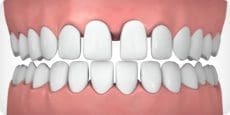
Gaps between teeth can occur with abnormal continued growth of the jawbone. Missing teeth can also cause the surrounding teeth to shift due to the extra space, creating gaps in your teeth. Spacing issues and gaps between teeth can lead to gum problems, periodontal pockets and increased risk of periodontal disease.
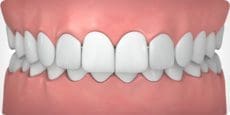
Overbite occurs when the upper teeth bite over the lower teeth. It’s typically caused by genetics, bad oral habits or overdevelopment of the bone that supports the teeth. If left untreated, this can lead to gum problems and/or wear on the lower teeth which can cause painful jaw and joint problems.

Underbite can occur when the lower teeth protrude past the front teeth. It’s usually caused by undergrowth of the upper jaw or overgrowth of the lower jaw. This can prevent the normal function of front teeth or molars, which can lead to tooth wear, causing painful jaw and joint problems.
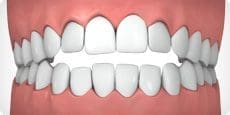
Open bite often occurs when some teeth do not make physical contact with the opposing teeth, causing an improper bite. It’s most often caused by genetic abnormal jaw structure or excessive thumb sucking. Open bite can cause poor or painful chewing and impair speech.
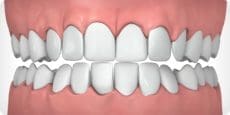
Teeth crowding occurs when there is not enough room within the jaw for all teeth to fit normally. When left untreated, overly crowded teeth can lead to plaque accumulation, tooth decay and an increased chance of gum disease.
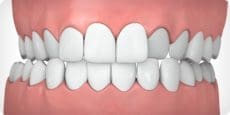
Crossbite occurs when the upper and lower jaws are misaligned, causing one or more upper teeth to bite on the inside of the lower teeth. This can cause wear of the teeth, gum disease and bone loss.
While Invisalign can correct a variety of dental issues, it’s important to note that not everyone is a suitable candidate for this treatment. Let’s discuss the factors that determine who is not an Invisalign candidate.
Invisalign is highly effective for mild to moderate orthodontic cases. However, individuals with severe dental misalignments, such as significant overbites, underbites, or crossbites, may not be suitable candidates. Such cases may require more complex orthodontic treatments, like braces or other orthodontic appliances.
Invisalign treatment is generally recommended for teenagers and adults who have all their permanent teeth. Children whose teeth are still growing and developing may not be eligible candidates for Invisalign. It’s best to consult an orthodontist to determine the appropriate age for starting orthodontic treatment.
Invisalign aligners are removable, which means they require a high level of commitment and responsibility from the patient. Those who struggle to wear the aligners for the recommended 20-22 hours per day or frequently forget to wear them may not see the desired results. Compliance is crucial for the success of Invisalign treatment.
Certain dental issues, such as severe overcrowding or the need for extensive tooth extractions, may render individuals ineligible for Invisalign treatment. These cases often require more comprehensive orthodontic solutions that only an orthodontist can provide.
Before undergoing any orthodontic treatment, it is essential to have good oral health. Individuals with gum disease or other oral health issues may need to resolve these problems before considering Invisalign. A healthy foundation is necessary to achieve successful outcomes with orthodontic treatments.
While Invisalign can effectively straighten teeth and enhance smiles, it is crucial for potential candidates to have realistic expectations. In some cases, individuals may have unrealistic goals or desires that are beyond the capabilities of Invisalign.
A consultation with an orthodontist can help determine if the desired outcomes are achievable with this treatment. Call us at (225) 923-2060 or request a FREE consultation so we can help you go over your options.
At Parker Orthodontics, we know the value of a beautiful smile. We see it every day in our patients! They leave our office with beaming, confident smiles to take on the world. That’s what makes our job worthwhile!
With prom, sports, and social events, we know it’s not always your first choice to have metal brackets and wires on your teeth. That’s why we offer a variety of clear options for our patients. One of those options is Invisalign Teen.
With Invisalign Teen, you can straighten your teeth without the restrictions of metal braces, and you can have the confidence to show off your smile every day.
Using a series of comfortable, customized clear aligners, you can straighten your teeth gradually over time.
Unlike metal braces, Invisalign has no food restrictions because the aligners are removable! Simply take them out to eat, drink, brush, and floss, and you’re good to go!
As with other types of orthodontic treatment, the cost of Invisalign® depends on the complexity of a patient’s case. The cost is generally slightly more expensive than traditional braces, but find out what your treatment involves by contacting our office for a complimentary appointment. We do not let finances stand in the way of getting a beautiful smile. We offer a number of payment plans that make any treatment fit our patient’s budget.
Yes. In both clinical research and orthodontic and dental practices nationwide, Invisalign® has been proven effective at straightening teeth.
Because medical benefits differ significantly from policy to policy, each patient should review their coverage. However, if a patient has orthodontic coverage, Invisalign® should be covered to the same extent as conventional braces.
Aligners are nearly invisible and look similar to clear tooth-whitening trays, but are custom-made for a better fit to move teeth. Some orthodontists and dentists have referred to them as “contact lenses for teeth.”
Like brackets and archwires, Invisalign® Aligners move teeth through the appropriate placement of controlled force on the teeth. The principal difference is that Invisalign® not only controls forces, but also controls the timing of the force application. At each stage, only certain teeth are allowed to move, and these movements are determined by the orthodontic treatment plan for that particular stage. This results in an efficient force delivery system.
Doctors can use Invisalign® to treat a vast majority of patients with fully-erupted molars.
For more information on Invisalign®, click here.